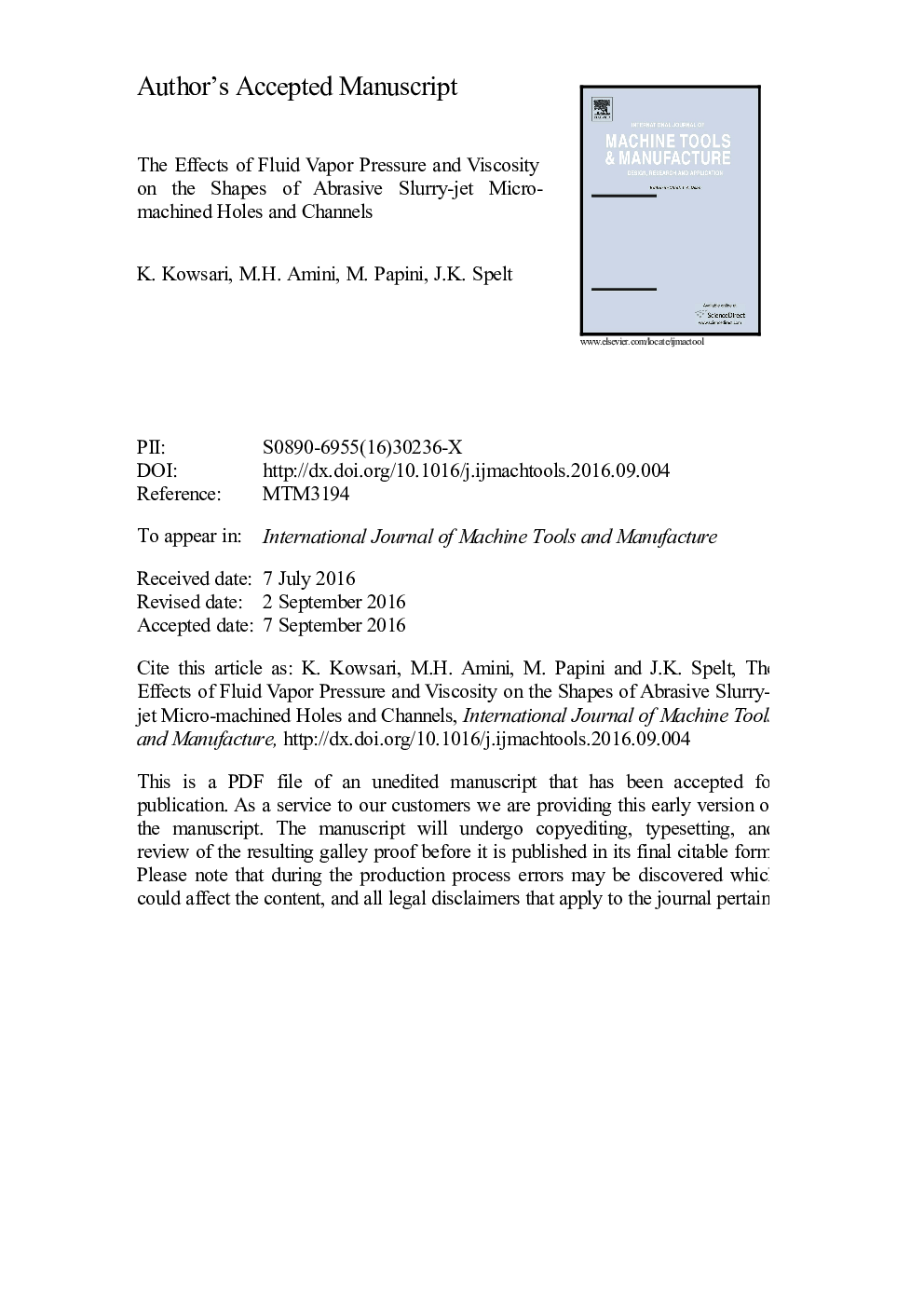| Article ID | Journal | Published Year | Pages | File Type |
|---|---|---|---|---|
| 7173396 | International Journal of Machine Tools and Manufacture | 2016 | 38 Pages |
Abstract
Abrasive slurry jet micro-machining (ASJM) can etch micro-features such as holes and channels in virtually any material. Holes, and to a lesser extent, channels machined in brittle materials using ASJM typically suffer from substantial edge rounding near the opening. This study investigated the erosive mechanism responsible for the rounding in borosilicate glass and sintered zirconium tin titanate targets, and determined the process parameters capable of minimizing the effect. Computational fluid dynamics (CFD) showed that the rounding that occurred during ASJM with a water-based slurry was due to the impact of particles accelerated by the formation and collapse of cavitation bubbles in regions where local pressures were below the vapor pressure of water. Further evidence of this was obtained by comparing the micro-topography in these regions with that produced by an ultrasonic cavitation apparatus in a water-particle slurry. Cavitation-enhanced erosion in ASJM was minimized using liquids such as mineral or soybean oil that have relatively low vapor pressures, resulting in blind and through-holes having sharp entrance and exit holes in glass and sintered zirconium tin titanate. The increased viscosity of the test fluids also altered the particle trajectories observed in the CFD models, causing the cross-sectional shape of the holes to have flatter bottoms and steeper sidewalls. In ductile targets such as copper, edge rounding due to cavitation-enhanced erosion was found to be much smaller than in brittle targets. In glass channels, the use of a soybean oil-based slurry eliminated the edge rounding and resulted in flatter bottoms, but increased the width by approximately 20%.
Related Topics
Physical Sciences and Engineering
Engineering
Industrial and Manufacturing Engineering
Authors
K. Kowsari, M.H. Amini, M. Papini, J.K. Spelt,
